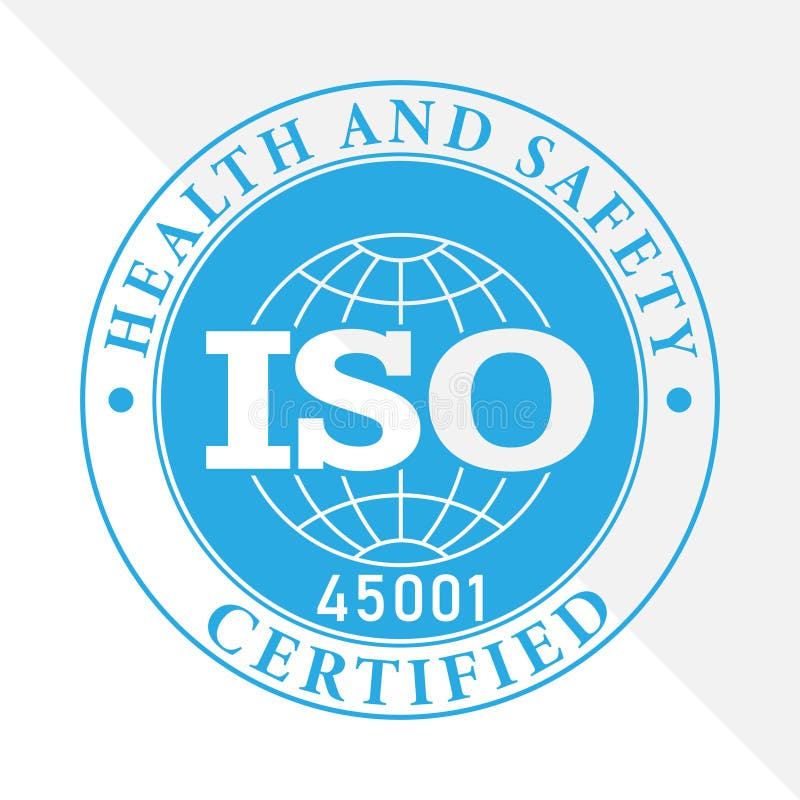What is ISO 45001 Certification Just Starting?
ISO 45001 international standard for occupational health and safety management systems. It is a process that functions as the rules, in organization setting to secure the workplace harder and help businesses be safe. Companies who choose this certification symbolizes that they are legal compliance and health protective of their workers.
ISO 45001 is a standard that many industries in particularly physical labor sensitive situations and hazardous conditions would greatly benefit from implementing. It enables businesses to avoid workplace accidents, mitigate downtime and promote a safety culture.
ISO 45001 Certification Key Benefits
Workplace Safety Improvements
One of the major benefits of ISO 45001 is to lower work place hazards and contribute to a safe working environment. By recognizing and managing risks, organizations can prevent accidents and injuries.
Lowing of the Legal Obligations
In some nations health and safety standards are highly regulated. ISO 45001 helps comply with the law of that country, avoids fines, legal trouble or commercial interruption.
Higher Motivation and Productivity of your Employees
Employees who feel safe to come to work, produce more as well as more engaged. A robust safety culture will increase job satisfaction and decrease the level of injuries from workplace related absenteeism.
ISO 45001 Certification Needs Explained
Organizations seeking to become ISO 45001 certified will need to fulfill the following norms to be able to achieve this also.
Management Commitment
The safety policies have to be supported in a real manner with resources from top management.
Risk Assessment and Hazard Identification
A workplace and company need to be evaluated for any risks and compensating strategies need to plan in terms of a controlled environment.
Employee Training & Participation
Employees should be trained regarding safety protocols and you want them to report any hazards.
How an ISO 45001 Certification process looks like
Gap Analysis
Organizational evaluation of the existing safety measures according to ISO 45001 standard.
Creation of documents and implementation
Creating PPs, Procedures and Records to Support the Continuous Practice of Safety Management.
Internal Audits and External Audit
Companies conduct internal audits before external audits are done as part of certification.
ISO 45001 Certifications in Pakistan
The energy around awareness of workplace safety in Pakistan is rising. A growing number of sectors like manufacturing, construction and healthcare are embracing ISO 45001 in order to secure worker safety and enhance compliance.
For certified Business in Pakistan start with asking an acknowledged certifying body and enroll when you are aiming to set up the equipment.
ISO 45001 2018 Revisions
ISO 45001, the newest classic has been improved over its older safety equivalent standards. Efforts include:
- Enhanced leadership in safety management.
- Empower employees to identify risks.
- A prevention-oriented strategy.
Changes like these need to be understood by businesses transitioning from, say, OHSAS 18001 safety standards.
ISO 45001 Challenges in Getting Certified Commonly
Some businesses have difficulty with:
- Lack of management commitment.
- Safety programs not implemented by the employees.
- Controlling compliance after certification.
Effective leadership and monitoring of safety practices is required to resolve such problems.
Pick the right ISO 45001 Certification Body
Before selecting an ISO 9001 certifying authority, businesses should first consider:
- How Certification Body is Accredited and How Credible of the Certifying Body.
- Industry experience of the participants.
- Quote and Support Services.
Efficient guidance of the businesses by recognized certification bodies in Pakistan.
Cost of ISO 45001 Accreditation
Cost of certification is set as:
- Complexity and size of the organization.
- Consultant/ Audit fees.
- Maintaining the system and re-certification costs.
Businesses have to make a budget for both the initial certification and long-term compliance efforts.
OHSAS 18001 vs. ISO 45001
ISO 45001, replaces OHSAS 18001 as one of the leading occupational health and safety standards.
Generally Most Significant Differences:
- Closely Associated with Leadership and Worker Involvement.
- Thinking risk-based to promote safety is century old.
- Adoption of other ISO Business Management Systems.
Business with OHSAS 18001 still in scope for future need to migrate to ISO 45001.
The ISO 45001 Certification Spreads Positive Business Repute
Organizations utilizing ISO 45001 certification have an incontestable benefit over others.
- Establish trust with customers and stakeholders.
- Boost credibility in safety-friendly sectors around the world.
- Speeding up market entry.
Tips to help you Be ISO 45001 Registered®
In order to retain certification the company must:
- Annual Internal Audits.
- Always be reviewing and updating your safety programs.
- Train staff to remain abreast of safety regulations.
ISO 45001 Certification and Consultancy Services
Organizations can take advantage of these:
- Employee compliance training that teaches safety standards.
- Certification Support Services whereby they can find someone to help with it.
- Workshops for promoting workplace safety consciousness.
ISO 45001 The new vision of workplace safety
The more things change, the more necessary it is to keep abreast with current cyber laws. Then the evolved ones will come, such as AI-based safety monitoring, automated compliance tracking & better employee training.
ISO 45001: The Challenges and Solutions for Implementing Certification
Getting past Resistance to Change
Adopting ISO 45001 is by far the toughest with employees and management always fighting against change. A lot of organizations have difficulty ensuring that staff are bought into the notion that a new safety system is needed.
Solution:
- Run awareness sessions to tell management about the benefits of ISO 45001.
- Get them to buy in by having employees play a part in decision making.
- Chalk up transparent messaging on how the changes will make them safer.
No Resources or Experts
ISO 45001 is harder for small organizations to implement properly.
Solution:
- Seek out an ISO 45001 consultant that walks others through the process.
- Seek out government-driven, or industry-specific grant money for safety programs.
- Starting with the smallest Safety Enhancements that you can fit into your everyday operating activities before action certification.
To stay compliant over time
However, a few companies fare well in kicking off their first certification audit and then fall out due to compliance lapses in the months ahead.
Solution:
- Implement regular internal audits for reliability.
- Keep train employees on the latest safety updates.
- Create a corporation-wide safety committee that will oversee implementation.
The ISO 45001 Certification and Leadership Role
Why Leadership Matters
Leadership involvement is highly highlighted in ISO 45001. Managers and business owners should lead by example to develop a safety culture.
Leadership Supporting ISO 45001 implementation
- Responsibilities and roles for safety management.
- Workplace safety reports should be regularly interrogated and people should take the bull by concern.
- Employee access to the safety and equipment they need.
The odds of successfully implementing and managing ISO 45001 are greatly improved when a unified team of leadership.
Based on the industries, some of the most benefit from ISO 45001 certification
ISO 45001 standards are useful for all organizations but in specific industries there profits more from adoption of this standard.
Construction
Mansards: construction companies have the highest accident rates and working environment hazards. ISO 45001 minimizes workplace injuries and fatalities.
Manufacturing
Factories and production plants are full-on machinery sites that will see chemicals being used in risky production processes. ISO 45001 lowers workplace risks and boosts productivity at work.
Healthcare
Hospitals & clinics Ensue the safety of the medical practitioners and patients. With a dedicated approach, ISO 45001 permits an effective strategy to manage workplace risks in Health care sector.
Oil and Gas
An industry of rapidly setting high-risk environments such as offshore drilling, refinery operations.
Logistics, warehousing
Companies in transportation and warehousing are forced to put their workers at the front of a large vehicle with heavy equipment.
How to Proceed from OHSAS 18001 to ISO 45001
Most of the businesses operated on a OHSAS 18001 level, but moving forward needed to transition to ISO 45001 as the older spec was replaced with the new one.
Key Steps in Transitioning
- The Differences Matter: While ISO 45001 talks a bit more around risk mitigation and engagement on leadership level compared to OHSAS 18001.
- Conduct a Gap Analysis: Not everything in your own system will need to change, so map out what tweaks are needed to become ISO 45001 compliant.
- Involve your Employees: Educate personnel in the new standard, and subtle how it plays out for their daily roles.
- Adjust Policies and Documents: Update safety protocols in line with ISO 45001 directives.
- Pilot Internal Audits: Ensure that all changes are properly rolled out before going for certification.
Transitioning to successful companies receive a more robust safety management framework and on the global standard compliance in addition improved.
Better Workplace Efficiency With ISO 45001 Certification
ISO 45001, businesses often prioritize it just for compliance but it comes along with many operational advantages too.
Work off site time reduction
Time lost in work with the mishap, delay of creation and financial loss can be listed for accidents and injuries. ISO 45001 controls these risks, to have the best possible process.
Boost Employee Efficiency
Employees who are safe work better. A safe working environment also minimizes absenteeism and increases job drive for an employee.
Reducing Insurance Costs
Companies with top safety management systems are awarded lower insurance premiums by carriers, therefore saving them money over time.
Steps for putting ISO 45001 into other ISO Standards
A number of organizations are already familiar with ISO standards, for instance from implementing ISO 9001 (quality management) and ISO 14001 (environment management). Together this can make for an easier management system when integrating ISO 45001 with other standards.
Key Benefits of Integration
- Easier to store documentation and compliance.
- Alignment of the goals, achievement of safety and quality with the environment.
- Reduces the performance in the entire business.
Where organizations embed multiple ISO standards typically improve regulatory compliance and operational efficiency.
ISO 45001 Certification Frequently Asked Questions
Q1. What about remote/office-based workplace can we apply ISO 45001?
Even office-based businesses can use ISO 45001 for things such as ergonomics, fire safety and emergency preparedness; the ISO standards will as much help you with the legal side of things as policies.
Q2. ISO 45001 vs ISO 9001 difference between them?
ISO 45001 is about occupational health and safety, ISO 9001 is pretty much (but very separated) about quality management. At a minimum, many businesses deploy these two standards to validate overall operational excellence.
Q3. What is the work required for 45001?
You need to engage employees in safety processes, as well as the reporting of hazards and conducting risk assessments: this is one of the core requirements for certification.
Q4. ISO 45001 internal audits how frequently do you need to do?
It should be conducted at least one year internally to stay compliant and identify the areas in need of improvement.
Q5. No: Can you get certified yourself without having an external consultant?
Yes and hiring a solid professional will likely make the whole process less of a headache, so all necessary requirements are delivered.








